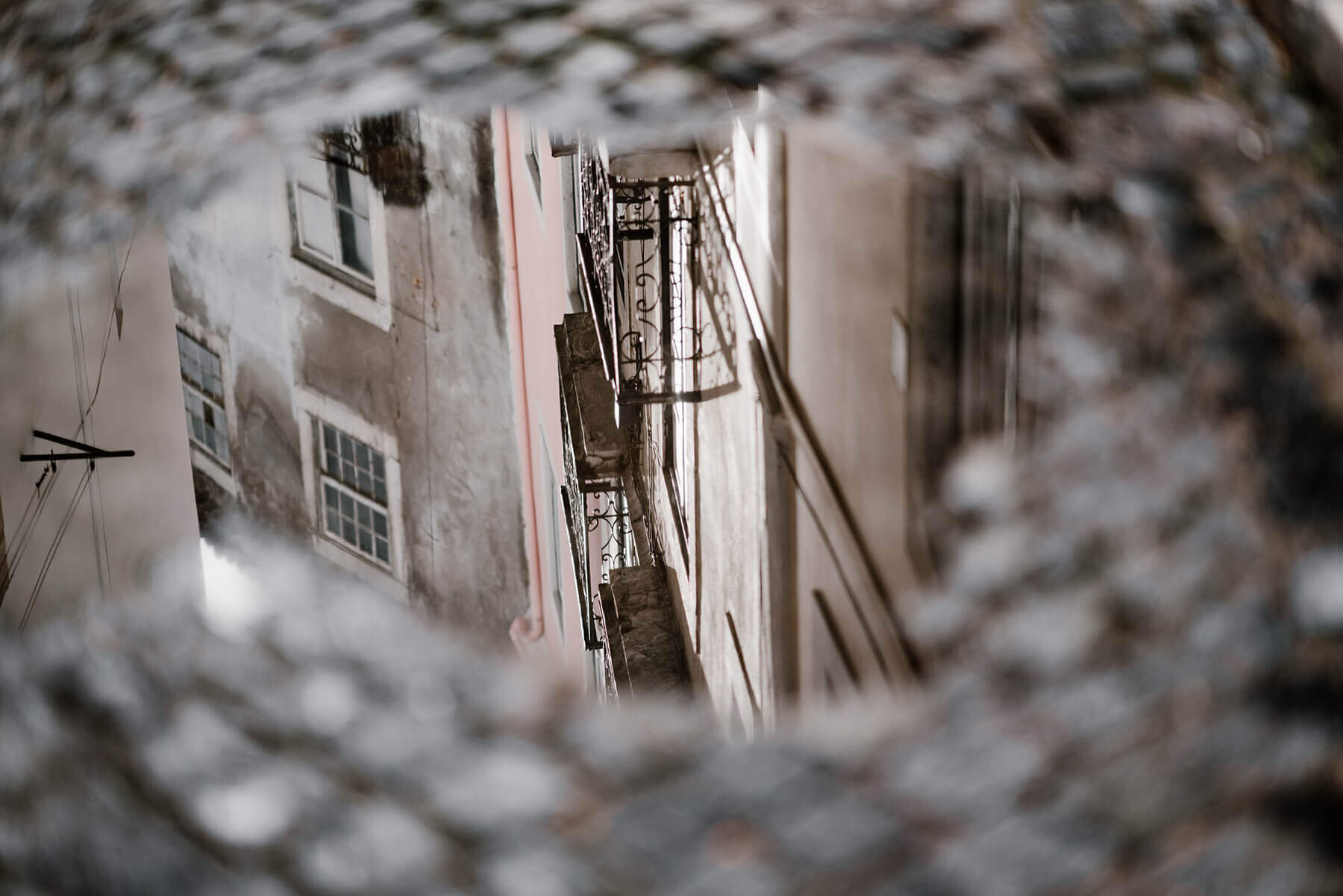
Shoot better reflection photos
Posted on Mar 20, 2020 • 5 minute read
Making the most of reflections can create real interest in your shots. Here are our tips for the best results.
You may always be on the lookout for the perfect frame, and that’s a great habit to keep, but what if the shot you’re looking for has been right at your feet the whole time? Well, maybe not the whole time, but in the right conditions, reflections really can improve your photos significantly.
A reflection can improve an otherwise less interesting composition, or even serve as a sole subject itself. It allows you to make the most of less than ideal weather and best of all, it’s something new and interesting to look out for. You’ll find this applies mostly to street photography, but it can certainly apply when shooting landscapes, portraits and even fine art photos.
You can use the window of a building or car, a large body of water or even a mirror to capture reflection photos, but in our opinion, some of the best results come from puddles on the ground. As such, our tips are geared towards that, but they have all-round application, so be sure to use them wherever and however you’re shooting.

Composition
In photography, composition is key, and reflection photos are no exception. If you have little of interest to show elsewhere, of if you’ve managed to find a complete scene within a reflection, there may not be a need to include anything more than the puddle in frame.
Alternatively, the reflection can be used as just a small part of your shot, to create greater depth or add an extra point of interest. If you’re going down this route, use of symmetry can yield very nice results.

Depth-of-field and focus
When it comes to this aspect of your reflection photo, there are two options, and they tend to coincide with your composition. If there’s much more to your shot than just the reflection, then you’ll likely want to opt for a smaller aperture and deeper depth-of-field.
On the other hand, if you want the key focal point to be the reflected image, opt for a faster aperture and focus there – manual focus is advisable for this. For a more abstract look, you can focus on the rest of the scene and use any reflections as just a source of colour or light.

Shoot at night
Shooting during the daylight hours can produce very nice shots, so don’t feel it should be avoided – just be careful not to catch the sun’s glare. When the sun goes down, however, a whole new set of opportunities present themselves.
Of course, in darkness, any light source is more eye catching, but this is only amplified when captured in a reflection. The results are, quite literally, dazzling. Plus, with less ambient light, reflections can look much clearer – so much so that they’re almost a perfect mirror image.

Conditions
Naturally, you’ll find more reflections in wet weather, which is ideal considering other photo opportunities are scarce. Don’t let a lack of rain ruin your fun, though. If you find a scene that you feel would lend itself nicely to a reflection, pour some water out on the ground. Carrying a reusable bottle full of water for this very purpose can be beneficial. If you are creating your own puddle, try shooting from very low to the ground with tighter framing so it’s less obvious that the rest of your scene is dry.
Another condition that shouldn’t be overlooked is wind. If it’s not a still day, you’re very unlikely to have clear reflections, particularly with larger bodies of water. If the water you’re hoping to capture isn’t calm, you can still get nice, if more abstract, results. This works best at night with larger scenes, and longer exposures help here, too.

If you’ve got reflection photos that you’d like to share, or if you capture some good ones using these tips, tag us on social media using the handle @photonewspn.
For more tips, techniques and guides, take a look at our Inspiration section.
Don’t forget to sign up to receive our newsletter below, and get notified about the new issue, exclusive offers and competitions.
Have you heard The Photography News Podcast? Tune in for news, techniques, advice and much more! Click here to listen for free.







